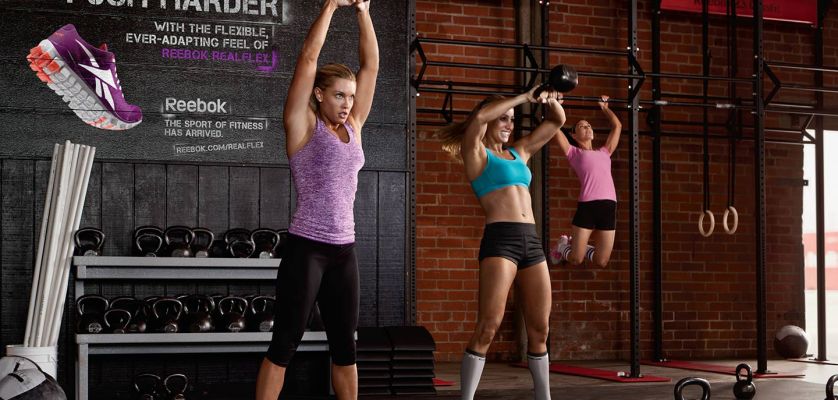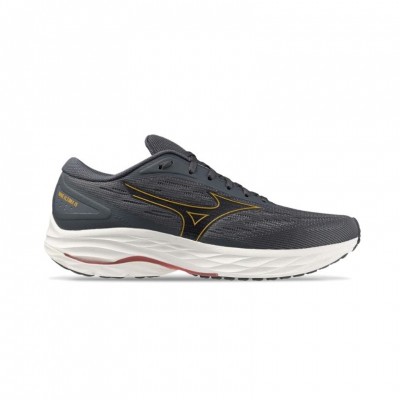
If you are a loyal follower of IronCrowns.com, you will remember that in one of our last posts we had the opportunity to interview Jorge Chiches García, trainer of the CrossFit Last Line Box. Among the many topics that this personal trainer touched on, we could keep the following sentence: "Many people would be surprised by the number of fine athletes who are able to move huge loads. Sprinters, triathletes... use heavy squats in their workouts, and this does not mean that they get as a result an over-muscled body".
We have to admit that we are a great majority of sportswomen who have intoned a resounding "No" when it comes to setting a routine with weights in the gym for the sake of gaining excessive muscle volume, and having a very muscular body. But such a reaction corresponds more to a false myth that hinders us in achieving a faster, more effective and stronger body. So, in case you still haven't thought about it, you should know that there are effective techniques with which you will be able to work on your strength without gaining more volume.
So let's start with the proposals:
Plyometric exercises.
Sound strange to you? Surely you've had a chance to see them in action. Squats, burpees, lunges... they sound familiar, don't they? Although they were originally developed as specific training for Olympic athletes, this jump training program has become popular. Through them you will be able to increase explosiveness and muscle strength.
The basis of plyometric exercisesis to perform a series of dynamic resistance exercises that develop both the eccentric phase (stretching action) and concentric (shortening action) of each muscle involved in each movement. Of course, to avoid the possible risk of injury, the ideal method to start is to go in progression: First with simpler exercises, and then move on to more complicated exercises.
- You may be interested in: Strength training, the keys to its improvement.
Alternate heavy and light weight lifting.
This technique of combining heavy work with light work will help you build and strengthen the muscle in a gradual way. Keep in mind that lifting heavy weights forces your own nervous system to activate the fibers of your entire musculature, while light weights with more repetitions relax muscle tension, and allow the nervous system to recover from the effort more quickly.
The number of repetitions to be performed will depend on your physical condition and brute strength.
Contrast training
Another type of resistance training that also alternates heavy and light loads to stimulate and improve muscle power. The execution methodology is focused on you being able to perform two exercises in a row. The first exercise usually consists of a traditional series of heavy loads to make the muscles more active. While the second exercise, lightly loaded and more explosive, continues to work on the same muscle group, which activates the muscle more quickly, and increases power.
As an example to put into practice: Perform a series of 6 repetitions of squats with heavy load, and then perform 10 squat jumps without load.
Exercises with free weights
Yes, those are the ones you're thinking of. From medicine balls, barbells, through kettlebells, to the typical dumbbells. With these exercises, in addition to developing balance, you will also activate your muscle mass, while developing strength and burning fat.
In addition, another argument in favor of training with free weights is that you will have the opportunity to work more specific areas of the muscle. On the opposite side, its big drawback is that the risk of injury is higher.
Dynamic stretching

There is controversy with currents that advocate static stretching (recommended for after physical activity), and other currents that promote dynamic stretching (before starting physical activity) because, among other things, they reduce the risk of injury.
However, controversy aside, dynamic stretching is an ideal method for gaining strength and flexibility. Your movements are more controlled, and mimic the actual movement of the muscles and joints in a physical exercise. Some of the best-known examples of dynamic stretches are arm circles, lunges and high knee walking.
And to all this exercise routine, whether you do plyometric exercises, free weights, or contrast training, it goes without saying that you also have to schedule your own rest time . And you must be clear about the premise of knowing how to listen to your body, otherwise you will not make progress. And do not forget that to see the desired results you must also have under control another vital aspect such as food. Exercise alone is not enough.
Choose the right equipment
Opt for very comfortable shoes but at the same time provide support and stability in the joints. A sole that grips but at the same time allows you to move fluidly.
Our recommendation is the new Nike Free Transform Flyknit, a revolutionary shoe concept that seeks maximum comfort and freedom of movement in every step. All without compromising the stability of the foot during exercise.
Read more news about: Running News


















